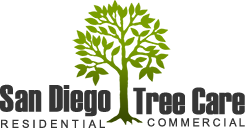Frequently Asked Questions
Q: Why should I hire a Certified Arborist?
A: An arborist is a specialist in the care of individual trees. Arborists are knowledgeable about the needs of trees and are trained and equipped to provide proper care. Hiring an arborist is a decision that should not be taken lightly.
Proper tree care is an investment that can lead to substantial returns. Well-cared-for trees are attractive and can add considerable value to your property. Poorly maintained trees can be a significant liability. Pruning or removing trees, especially large trees, can be dangerous work. Tree work should be done only by those trained and equipped to work safely in trees.
Q: What does it mean when you say you are going to prune my tree?
A: Pruning is the cutting or removing branches or parts of trees or for improving the shape or growth of trees. This is the most common tree maintenance procedure. Usually, trees are pruned preventative or as a corrective measure to remove dead branches, crowded or rubbing limbs, eliminate hazards, and increase light and air penetration. Since each cut to a tree has the potential to change the growth, it is important to educate yourself, considering no branch should be removed without any reason.
Q: Why shouldn’t I have my tree’s topped?
A: Topping is the indiscriminate cutting of tree branches to stubs or lateral branches that are not large enough to assume the terminal role. Other names for topping including “heading,” “tipping,” “hat-racking,” and “rounding over.”
Topping is perhaps the most harmful tree pruning practice known. It is usually done to reduce the size of a tree. Often, homeowners top their trees because they feel that they have become too large for their property and are a hazard. However, topping will make a tree more hazardous in the long term and is very harmful to the health of a tree.
Q: Why should I hire a licensed contractor with full Insurance coverage?
A: Protection! Sooner or later someone has an accident do you want to be the one responsible? Any tree care professional should be a state licensed contractor, have $1,000,000 in liablility insurance, have workers compensation insurance, and complete vehicle insurance.
True certificates of insurance should come directly from the insurance company to the customer and list the customer as the certificate holder. Please be street smart and do not accept copies from the contractor or listings that say the contractor is fully insured in advertising, remember your financial future could depend on it!
Q: What is root pruning, how is it done, and why is it necessary?
A: Root pruning is similar to pruning branches, and is done when roots are infringing on an area where construction is to be done, or when they are causing damage or safety problems to sidewalks, driveways, streets, and the like.
A callus will form at the cut, and new roots will generate from the callus. A Certified Arborist can determine which roots to prune and how much of the root system can be pruned without harming the tree.
Q: How do you remove a large tree stump in my yard?
A: Tree stump removal is performed using stump grinding machines. These machines have a wheel lined with carbide tipped teeth and they methodically grind the stump below the surface usually to a depth of 12” depending on the circumstances. Stump grinders come in a variety of sizes depending on the size of the stump.
Q: What is mulching?
A: Mulches are materials placed over the soil surface to maintain moisture. Mulching is extremely beneficial to trees. It can reduce water loss from soil, minimize weed competition, and improve soil structure. Properly applied, mulch gives landscapes a healthy dose of benefits for your trees.
Q: How much mulch should I apply to my soil surface?
A: Mulch should be about 2″ on clay soil and 3″ to 4″ on well drained soil such as decomposed granite or sand. Allow for longer watering times and decrease the watering frequency, this will allow water to move through the mulch and into the soil.
